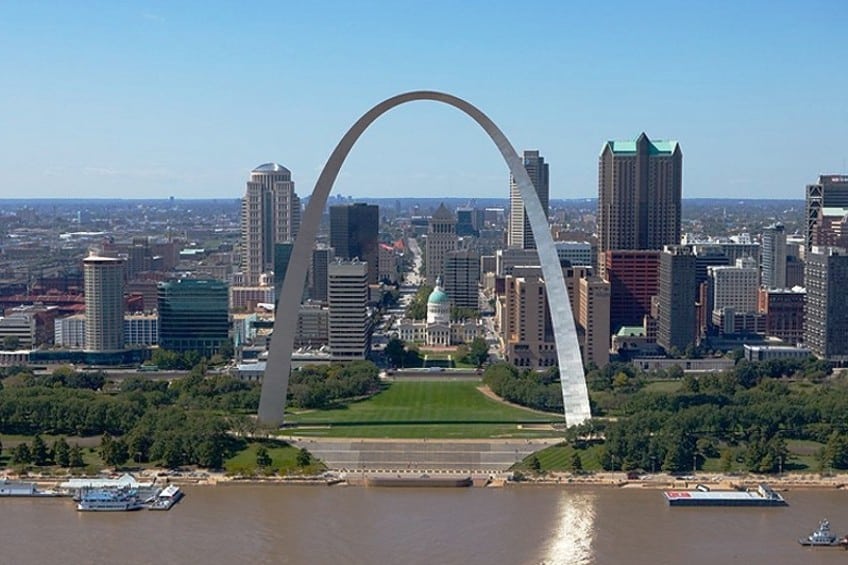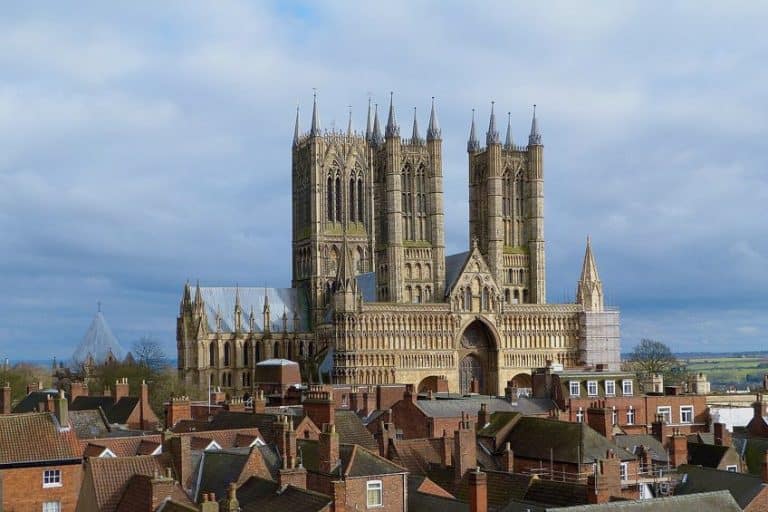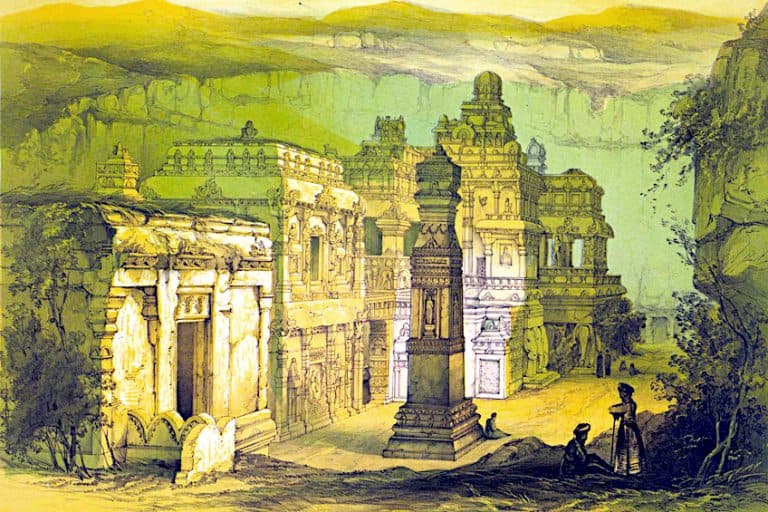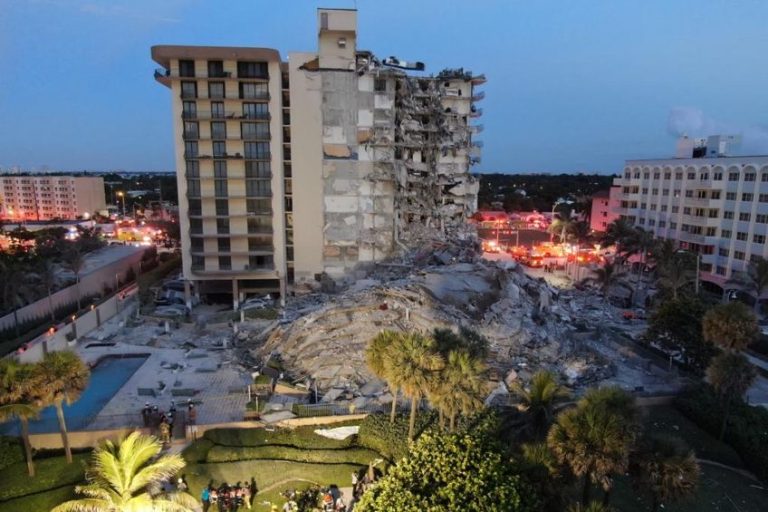Gateway Arch – A Portal to Greatness
The Gateway Arch in St. Louis, Missouri, is a 192-meter-tall monument, which took its name from the city’s position as the “Gateway to the West”, so named due to the 19th-century western expansion. But where is the arch located in St. Louis, and when was the St. Louis Arch built? The arch is located on the western bank of the Mississippi River, with construction commencing in 1963 and wrapping up in 1965. Today, we will explore the Gateway Arch’s history and facts, such as the St. Louis Arch’s height, and more!
Table of Contents
The Story of the Gateway Arch in St. Louis
| Architect | Eero Saarinen (1910 – 1961) |
| Date Completed | 1965 |
| Materials | Stainless steel |
| Function | Monument |
| Height (m) | 192 |
| Location | St. Louis, Missouri, United States |
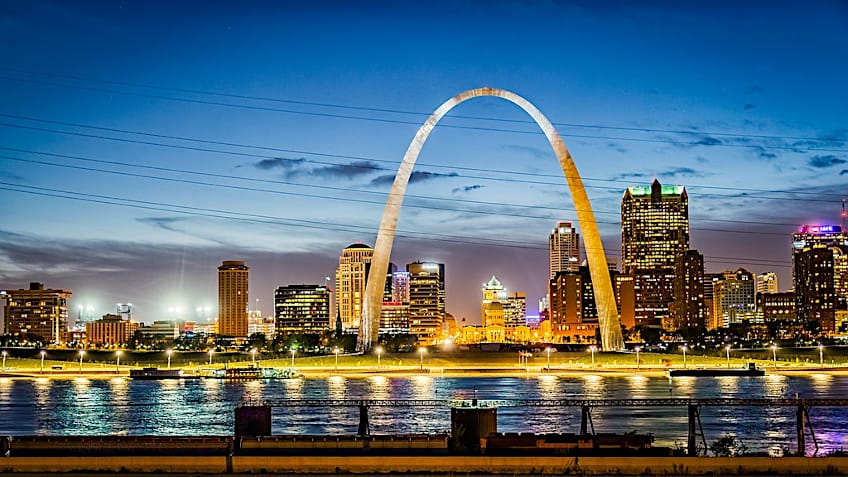
Ranked as the tallest arch in the world, it was constructed in the form of a catenary arch and made from stainless steel. It is also the tallest accessible structure in Missouri and some sources assert that it is also the Western Hemisphere’s tallest monument. Eero Saarinen designed the arch in 1947, yet construction only began in 1963.
The Gateway Arch’s History
After returning from a national historical park in Indiana, Luther Ely Smith, looked at the riverfront of St. Louis and had the idea to construct a monument that would help stimulate the city’s economy and revitalize the riverfront area. Bernard Dickman, the mayor, was told about the idea, and then brought it up at a city leaders’ meeting on the 15th of December 1933.
They agreed to the proposal and formed an association with the goal of creating a monument to the pioneers who spear-headed the westward expansion of United States territories.
It would serve as a memorial in remembrance of the significant individuals who sought to explore new regions for the benefit of the people, such as Lewis and Clark, the great frontier explorers, and President Jefferson, along with all the frontiersmen who helped expand the States’ territory.
Funding of the Gateway Arch Concept
Most of the local inhabitants were not too thrilled with the idea, especially since it would be paid for by public funding. They felt that it would be more practical to spend the funds on things that were really needed. Smith’s usual reply to such arguments was that spiritual things were as necessary as practical things. It was estimated that around $30 million was required for the monument’s construction, with the federal government expected to cover ¾ of the overall expenditure.
This was not the first time that someone had proposed the idea of uplifting the riverside area, yet each idea had been met with similar disdain and eventually abandoned.
Due to the Great Depression, it was especially financially challenging for most people, and the idea of such a large expense for a monument seemed foolish. However, the association stated that the construction of the Gateway Arch would necessitate the employment of many people, therefore creating thousands of new jobs for the community – around 5000 individuals would be hired for approximately three to four years. They then started to try to raise public awareness of the monument by publishing pamphlets and organizing various fundraising initiatives.

The Design Competition for the Gateway Arch
In December, the committee then resolved to throw a competition in which people could enter their architectural designs for the arch in St. Louis. Louis LeBeaume, a local architect, drew up the guidelines for the architectural competition in January of 1935. The winner would receive a monetary prize for their chosen design. The competition finally opened for applications on the 30th of May, 1947. A two-stage contest was announced – the first stage would narrow down the potential designs to five entries, and the final stage would be the selection of a winner from the selected five potential designs.
The jury received their first entries on the 1st of September, 1947, which were all assigned numbers so that no one would know which designer had created which design.
They received 172 design entries in total and spent the following four days deliberating which five would be chosen as finalists. The finalists were announced on the 27th of September. Among them, was Eero Saarinen’s design, which the jury felt was inspired, relevant, and beautiful. A few of the members appreciated the design aesthetic but questioned how feasible it would be to construct such a structure.

Telegrams were sent to the finalists to notify them of making it to the next stage of the competition. Eero Saarinen’s father, Eliel, was also a renowned architect and had also submitted a design for the competition. The secretary in charge of sending out the telegrams accidentally addressed it to Eliel, who promptly celebrated by opening a bottle of champagne. When informed about the error a few hours later, he brought out another bottle of champagne to celebrate his son’s achievement. Each of the finalists received a prize of $10,000 and moved on to the next stage.
Eero Saarinen then made a few adjustments to his design, extending the St. Louis arch’s height to 190 meters.
He then wrote that the archway represented the westward expansion and would stand as a monument to those who helped explore new territories. In his design, he also stated that he intended the monument to be surrounded by a thick forest of trees that would act as a place of peaceful respite from the harsh city. The deadline for this stage was the 10th of February, 1948. Eight days later, Saarinen’s design was unanimously chosen by the jury. He was awarded $50,000 and his team received $40,000 for their efforts. Surprisingly, this was the first architectural design that Eero Saarinen had produced without any help from his father.
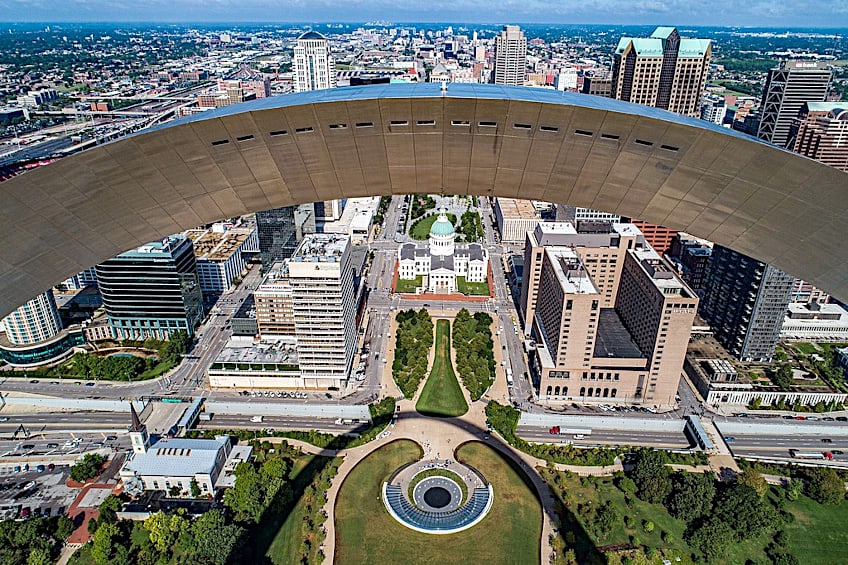
The chosen design received very mixed results from the public and critics alike. While some felt that it was an impressive modern monument, others derided it as being a “stupendous hairpin. One critic went as far as to suggest that the arch actually represented a fascist symbol. Saarinen found this assertion to be ridiculous, stating that he could not understand how anyone could see a fascist symbol in a design inspired by nature and that no ideological or political agenda was behind the shape of the design.
Public Access to the Gateway Arch in St. Louis
Upon completion, it was estimated that the arch would be visited by around three million tourists every year. In its first year, over 619,000 people toured the arch’s apex. By 1974, it was ranked one of the top four attractions for tourists.
Today, it is ranked among the most visited attractions worldwide, with more than four million tourists entering the structure every year.
The Visitor Center
The visitor center of the Gateway Arch is situated underground and was built in 1966 as part of a program to expand the Park Service visitor centers. It is situated right underneath the arch, and although it was built at the same time as the actual monument, due to insufficient funding, it would not be completed until 1976. Inside the center, one can find mechanical rooms, offices, and the tram waiting area. It also houses the center’s major attraction: a museum, as well as two cinemas that play documentary films about the Gateway Arch.
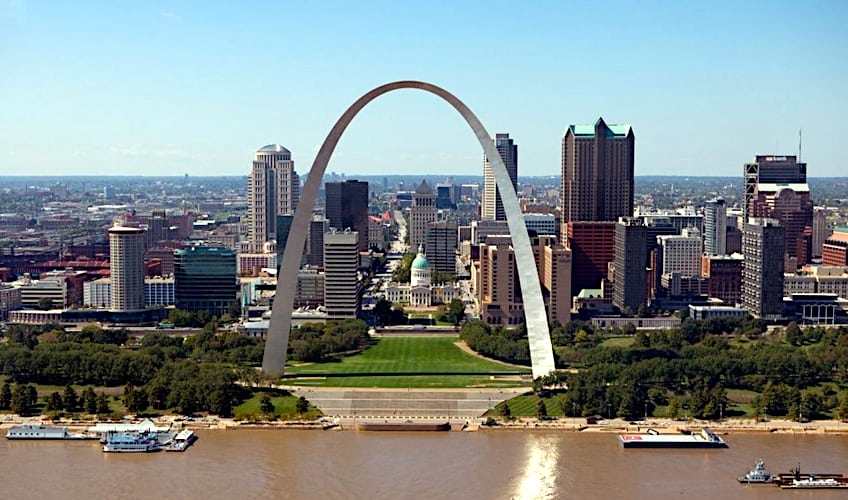
One of the cinema theaters first opened in 1972, and the other was built in the 1990s and boasts a screen that is four stories in height. To construct the theater, builders had to excavate solid rock, all while attempting to not disturb the museum’s operation. Opened on the 10th of August, 1977, the museum features hundreds of exhibits documenting the western expansion of the United States. The center underwent further renovation and expansion in July 2018, which cost $176 million. The expansion included the addition of a cafe, fountain, video walls, and interactive galleries.
The Observation Area
Towards the apex of the Gateway arch is an observation area, which is accessible by taking a tram up towards the top and then ascending a slight grade to reach the area. The deck arches over an area of around 20 meters and features 16 windows on each side of the arch that can be used to peer down at the city below. To get to the top, one can either take a tram, an elevator, or climb one of the staircases. There are two trams, which can each seat 40 passengers, and they leave every 10 minutes from the ground level. Although regarded as safe, there have been a few incidents with the tram system.
A mother, her six-year-old son, and two of the mother’s friends got stuck in one of the trams after the arch had closed for business on the 8th of July, 1970.
They took the tram up at around 9:30 p.m., yet when it approached the de-boarding platform it did not stop and proceeded to continue to a storage section around 15 meters above the platform and then shut down. After being stuck inside the tram for approximately 45 minutes, one of the women managed to pry the door open and they were able to eventually reach a security guard. Another incident occurred on the 21st of July, 2007, when one of the trams had to be shut down due to a broken cable. The broken cable then made contact with a rail with high voltage, and the fuse blew. For three hours, 200 tourists were stuck inside. Luckily, most of the visitors stayed relatively calm and none was seriously hurt.
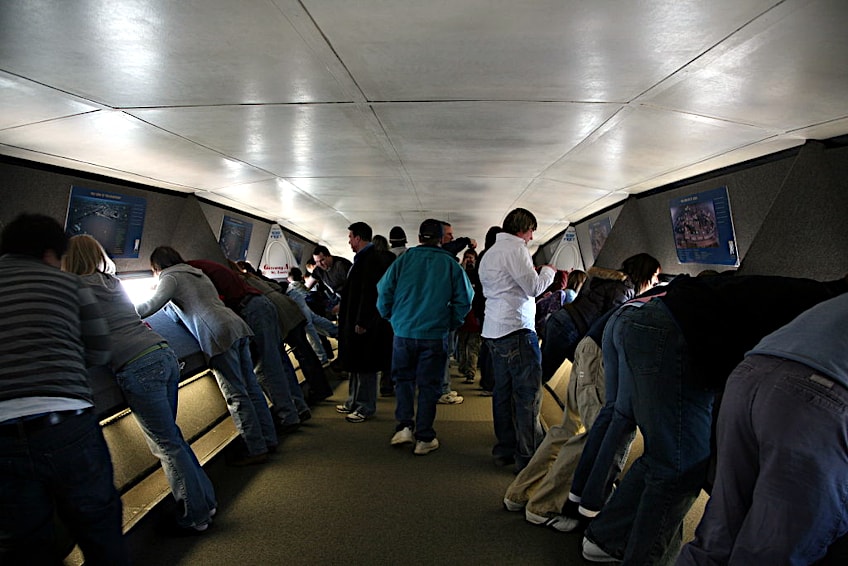
One person had to receive medical treatment for her diabetes and another required oxygen. All of the visitors were reimbursed for their tickets. The tram was then shut down until 2008 to carry out the necessary fixes and safety checks.
Unfortunately, an electrical switch broke almost straight after service resumed in 2008.
Another incident occurred on the 24th of March, 2011, when 100 people were stuck in the observation area for almost an hour as the tram door would not shut. It was later attributed to a glitch in the new computer system that had been installed to control the trams. The other tram – which was out of commission so that the new system could be integrated, was temporarily brought back into use to safely transport the stranded passengers back to ground level.
Designed as a memorial for all those who had participated in the westward expansion, it symbolizes the pioneering spirit of those who set out to conquer the west. It is said that its elegant and simplistic form makes the structure appear timeless, without any obvious adornment or embellishments that can tie it to a specific era or period of time. Its sleek surfaces, majestic height, and impressive design have helped to ensure that the Gateway Arch in St. Louis will continue to amaze tourists for many years to come.
Frequently Asked Questions
When Was the St. Louis Arch Built?
A competition was first held in 1944 so that an appropriate design for the monument could be found. Out of 175 entries, only five were picked for the final round. Out of those, the design of Eero Saarinen most caught the attention of the judges. Construction of the monument, however, would only start many years later, on the 12th of February 1963. It would take almost three years to complete, and was finally ready on the 28th of October 1965. It eventually opened to the public two years later in 1967.
Where Is the Arch Located?
It can be found next to the Mississippi River, on the western bank, in the city of St. Louis. It was proposed after Luther Ely Smith, a local civic leader, returned from a trip to Indiana, where he was impressed by the city’s historical park and believed that something similar would be appreciated in St. Louis. He envisioned some sort of monument that would be placed by the river’s edge, and that would draw people from far and wide, thereby invigorating the riverside, and stimulating the commercial potential of the area.
Justin van Huyssteen is a freelance writer, novelist, and academic originally from Cape Town, South Africa. At present, he has a bachelor’s degree in English and literary theory and an honor’s degree in literary theory. He is currently working towards his master’s degree in literary theory with a focus on animal studies, critical theory, and semiotics within literature. As a novelist and freelancer, he often writes under the pen name L.C. Lupus.
Justin’s preferred literary movements include modern and postmodern literature with literary fiction and genre fiction like sci-fi, post-apocalyptic, and horror being of particular interest. His academia extends to his interest in prose and narratology. He enjoys analyzing a variety of mediums through a literary lens, such as graphic novels, film, and video games.
Justin is working for artincontext.org as an author and content writer since 2022. He is responsible for all blog posts about architecture, literature and poetry.
Learn more about Justin van Huyssteen and the Art in Context Team.
Cite this Article
Justin, van Huyssteen, “Gateway Arch – A Portal to Greatness.” Art in Context. September 7, 2023. URL: https://artincontext.org/gateway-arch/
van Huyssteen, J. (2023, 7 September). Gateway Arch – A Portal to Greatness. Art in Context. https://artincontext.org/gateway-arch/
van Huyssteen, Justin. “Gateway Arch – A Portal to Greatness.” Art in Context, September 7, 2023. https://artincontext.org/gateway-arch/.


